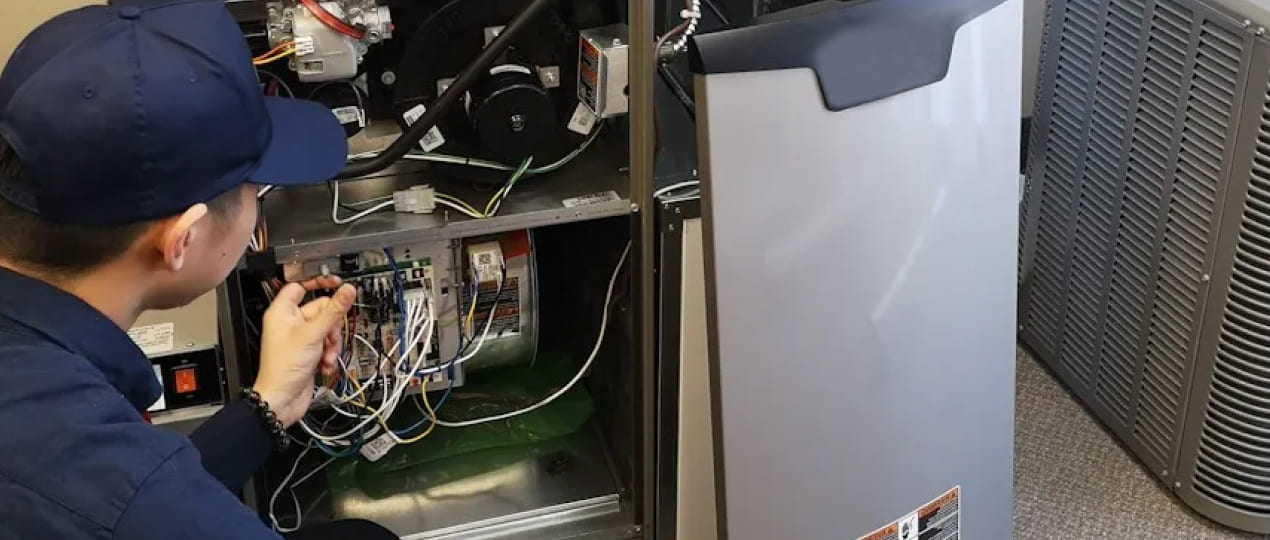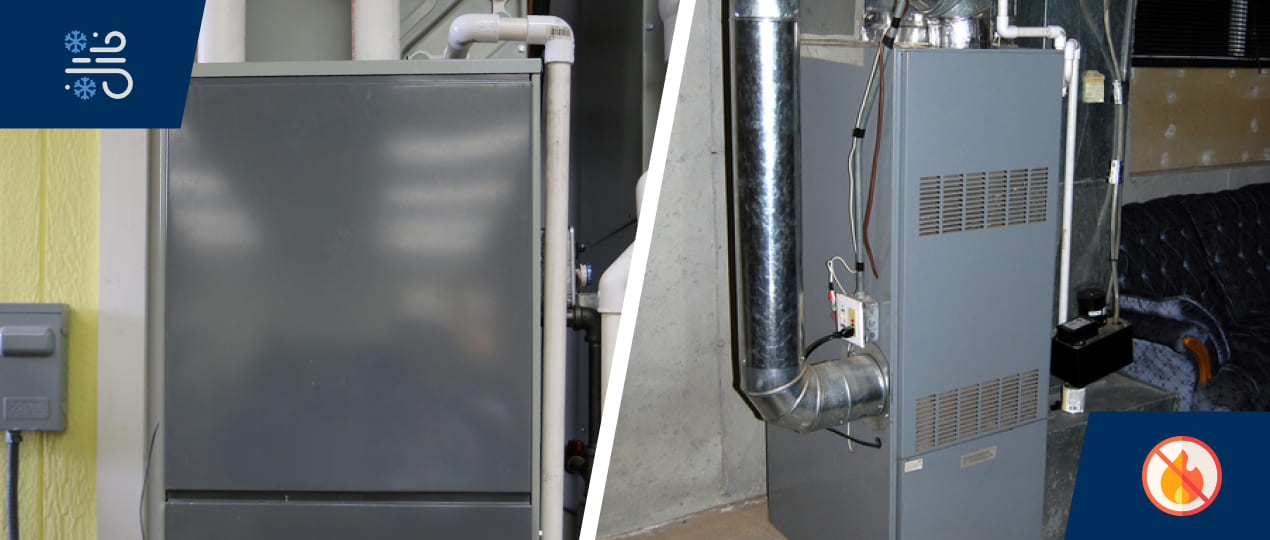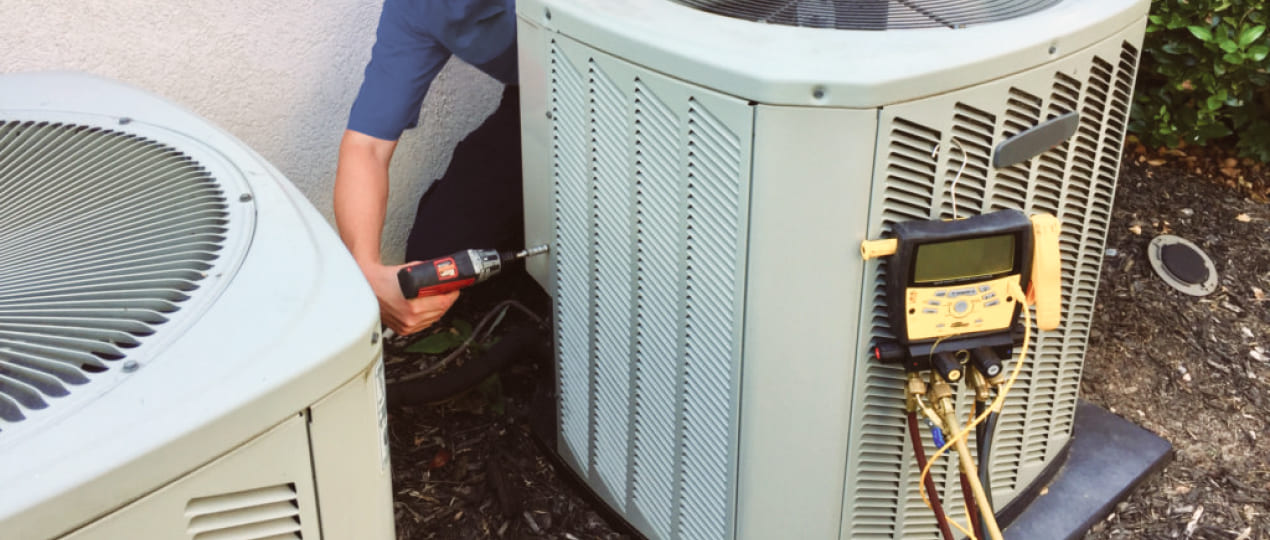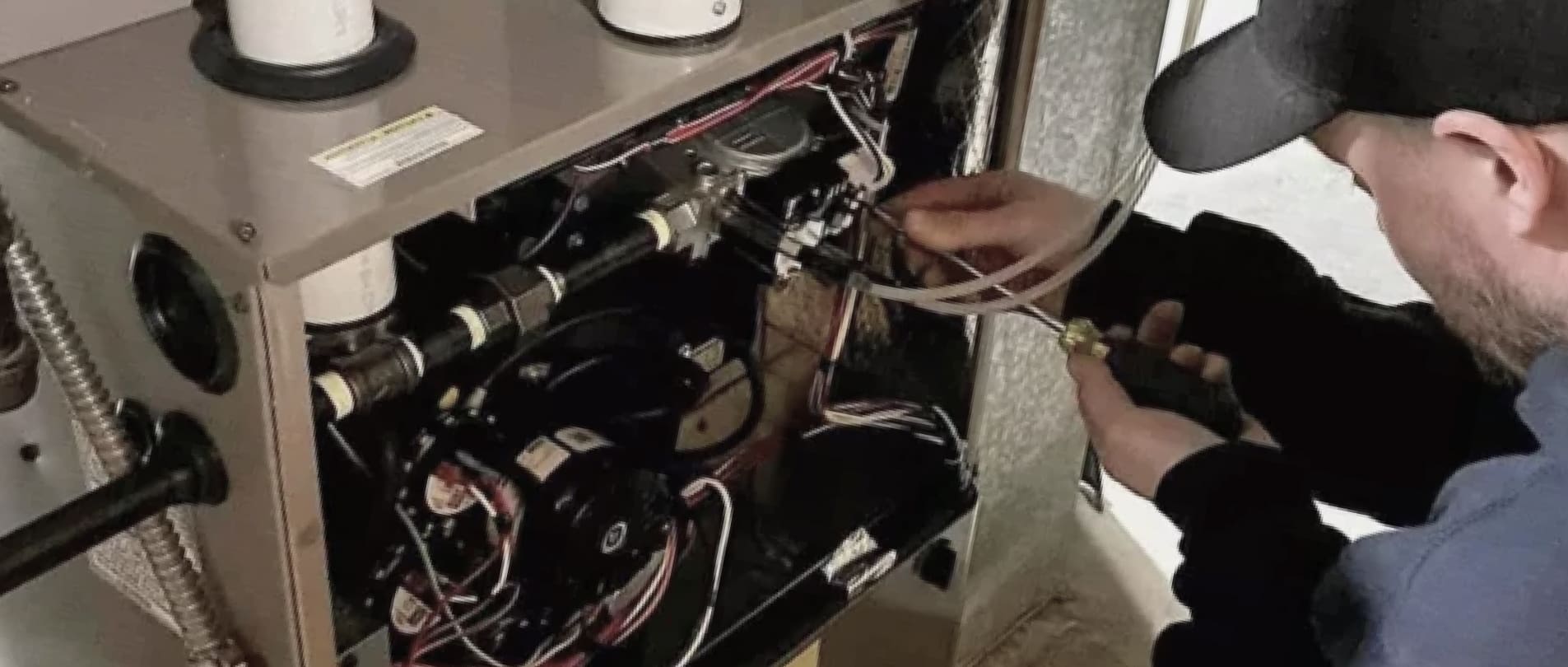
During cruel winters, homeowners get used to relying on a dependable heating system for maximum indoor comfort. However, sudden fluctuations in temperature can bring discomfort for everyone, anytime, and anywhere. When warm air suddenly turns chilly, understanding why is furnace blowing cold air becomes a top priority. Although numerous factors may contribute to this unsettling issue, recognizing the most common culprits helps you take quick and effective action.
Seasoned technicians advise a methodical approach to troubleshooting. Begin by confirming that each component, thermostat, pilot light (if applicable), filter, vents, performs as intended. Such a strategy can show whether a minor oversight or a more severe hardware problem leads to such an issue. Alright, by familiarizing yourself with the fundamental reasons behind heat loss, you are better equipped to address any challenge. Today, we will look into details regarding the reasons and consequences of blowing cold air, and what you should do with that.
Common reasons your furnace blows cold air
Well, even a well-maintained heating system can fall victim to sudden glitches. If you find yourself questioning why is my furnace blowing cold air, rest assured that the underlying reasons are often straightforward and fixable if you notice them on time.
Here are five common reasons your furnace might be blowing cold air:
- Thermostat settings Ensure the thermostat is set to “HEAT” and not “FAN ONLY” mode. Incorrect settings can prevent warm air from circulating;
- Clogged air filter A dirty or clogged filter can restrict airflow, causing the furnace to overheat and blow cold air as a safety response;
- Pilot light or ignition issues If the pilot light is out or the electronic ignition system malfunctions, the furnace won’t produce heat;
- Faulty flame sensor A dirty or defective flame sensor can shut off the furnace’s burners, resulting in cold air blowing through the vents;
- Ductwork leaks Cracks or gaps in the ductwork can let cold air mix with the warm air, reducing the overall temperature of the air reaching your rooms.
Identifying these possible causes can save time, effort, and money while restoring the warmth and comfort you need during cold seasons, guaranteeing your home remains cozy and energy-efficient all winter long. Well, you should always think about your house’s condition to avoid inconvenient living and many expenses in the future.
Incorrect thermostat settings
It can happen that a hasty adjustment on the thermostat leads to surprising outcomes. If you suddenly discover “my furnace is blowing cold air” at a time when it should be heating, verify the mode: “Auto” makes certain the blower runs only during heat cycles, while “On” may circulate air continuously, even cool one. Double-check these selections to resolve the worry that your furnace blowing cold air and won’t shut off might lead to a serious breakdown. Often, a simple switch of a button is all it takes to return to consistent warmth. If it’s not, then keep reading further.
Blocked vents or clogged ducts
In many households, dust buildup or foreign objects lodged in pathways will hinder flow. When a furnace just blowing cold air where warm air should circulate, it may indicate that vents or ductwork need immediate attention. Over time, anything from pet hair to insulation fragments can block passages. If such obstructions remain untreated, the furnace only blowing cold air becomes an increasingly common scenario. Keeping ducts and vents clean is a proactive measure to maintain even, pleasant heating. At the first hint of flow problems, contact Superior HVAC Service for prompt observations and cleaning. Our experts will assure your ducts remain free of debris.
Dirty or clogged furnace filter
Regular replacement is indispensable for keeping air moving freely through your HVAC system. Nonetheless, neglect causes these filters to accumulate grime, adding strain on the blower. Eventually, restricted airflow can make you panic regarding why is cold air blowing from furnace vents. When dust blocks the path, the heating element may overheat and shut down, and the system distributes cooler air.
By installing a new and high-quality filter at recommended intervals, you are capable of reducing the likelihood of repeated malfunctions. If these symptoms persist, Superior HVAC Service can provide a thorough diagnostic to determine if ducts or other factors are contributing to unexpected cold. Give us a call today in case you have similar troubles!
Pilot light or gas supply issues
For gas appliances, a stable pilot flame is truly meaningful. If that light keeps going out, or if the gas supply valve is partially closed, you might find yourself asking why it’s happening at unexpected times. Before panicking, verify that the pilot flame is both present and steady. If problems persist or you detect an odd smell, call in a professional to check for possible gas leaks, damaged components, or low pressure. Prompt attention makes sure safe, efficient heating.
Cracked heat exchanger
One of the serious explanations of why furnace blows cold air is a poor heat exchanger. With some crack, air is permitted to mix improperly, jeopardizing the system’s ability to heat and overall household safety, as carbon monoxide leaks may pose severe health risks. If you suspect no heat from furnace due to an exchanger malfunction, halt operations immediately and contact a technician.
Timely diagnosis and repair could protect both your comfort and well-being. Superior HVAC Service is always ready to assist with expert analysis, fixes or replacements if you suspect exchanger challenges. Call us immediately if you notice something goes wrong, and we will be here to assist you!
How to diagnose a furnace blowing cold air
If you are uncertain why does my furnace blow cold air, a structured evaluation can aid narrow down potential faults. Some tasks are suitable for cautious homeowners, but please note that advanced diagnostics require professional intervention.
Consider such steps we’ve gathered as a starting point:
- Check the pilot light and gas supply Confirm the pilot flame is lit and steady. An extinguished or wavering flame can point to an electric furnace blowing cold air troubles in modern ignition systems, or more classic pilot light complications in older models.
- Inspect the filter for dirt and debris A filthy one might be the culprit behind furnace blowing cold air no heat. By removing and evaluating it, you can quickly see if flow is severely limited, leading to cooler discharge.
- Examine the heat exchanger for cracks Shine a flashlight carefully to spot any signs of stress or fractures. If a furnace blowing cold air not heat persists, a damaged exchanger may be at fault, necessitating immediate attention with proper background.
- Test the thermostat settings Guarantee that the unit is set to “Heat” and the blower on “Auto.” If you notice a furnace blowing cool air instead of warmth, a minor thermostat error may often be the culprit.
When your heating system fails to deliver the expected warmth, these simple checks can help you identify whether a basic fix or a more comprehensive service is needed.
Can a dirty air filter cause a furnace just blowing cold air?

Dirty filters are the silent enemies of HVAC systems. They clog the flow, trap pollutants, and force the furnace no heat blows cold air cycle to compensate. Over time, the entire unit strains to reach desired temperatures, undermining both efficiency and indoor quality.
How often should you replace a furnace filter?
Usually, skilled technicians suggest changing filters at least once every three months. But if you have pets or reside in a dusty environment, monthly checks are wise. A neglected accelerates difficulties such as a gas furnace blowing cold air unexpectedly because the blower can overheat, leading to safety shutdowns. Frequent replacement is one of the simplest ways to keep the system performing optimally in your house.
Impact of clogged filters on airflow and heating
Limited airflow forces the heating components to work harder, raising the possibility of complete shutdown. When you wonder why does a furnace blow cold air or why does furnace blow cold air after running briefly, the filter is often a prime suspect. By maintaining a clean filter, you assist stabilize operating temperatures and preserve efficiency, reducing the chance of abrupt performance dips.
Steps to prevent your furnace from blowing cool air
A bit of diligence and regular care can minimize troubles and keep the question of no heat from ever arising. Proactive measures ensure both efficiency and safety, thus extending the service life of your equipment. Scheduling professional checkups, cleaning filters, and sealing ductwork can further enhance performance, prevent breakdowns, and lower energy costs, providing uninterrupted warmth throughout the season.
Routine maintenance for heating systems
Seasonal check-ups uncover hidden defects or other functional glitches. Calling in qualified technicians at least once a year assists you catch small troubles before they escalate into major problems. Regular assessments can identify wear and tear, clogged filters, or malfunctioning components that might compromise the efficiency and reliability of your device.
Additionally, technicians can warrant all safety mechanisms are functioning properly, reducing the risk of hazardous situations like carbon monoxide leaks. By addressing these potential concerns early, you not only save on costly repairs but also maintain consistent warmth and comfort throughout the colder months, verifying peace of mind for your household.
Keeping air vents and ducts clear
Blockages in delivery pathways hinder heat distribution, making it difficult to maintain a consistent temperature. Periodic cleaning safeguards against such concerns in areas meant to stay cozy and assures the system operates smoothly. This routine care also optimizes energy usage, preventing unnecessary strain on the furnace and lowering utility bills. Dust, debris, and other obstructions can accumulate over time, so inspecting and clearing vents and ducts regularly is crucial to maintaining a comfortable and efficient home environment.
Regularly replacing air filters
Consistent changes remain vital for steady operation, as clogged or dirty filters may greatly hinder performance. Without fresh filters, you risk a swift transition due to restricted airflow and increased strain on the system. Neglecting this simple maintenance step can also lead to higher energy bills and potential long-term damage. To avoid these challenges, mark your calendar for monthly examinations or replacements every few months, guaranteeing proper airflow and a consistently warm home.
Scheduling annual furnace inspections
An annual experienced assessment helps identify wear-and-tear, cracks in the heat exchanger, or other causes such troubles. These thorough evaluations cut down on hazardous malfunctions and future repair expenses. For complex cases or urgent repairs, please contact Superior HVAC Service. Our specialists will quickly determine any malfunction and make every effort to make your home warm and comfortable again.
When is it time to book a furnace inspection?
If your furnace is blowing cold air, it could be due to incorrect thermostat settings, dirty air filters, pilot light issues, or other mechanical problems. Experiencing cold air from your furnace is a clear indication that professional inspection is necessary. Ignoring this issue can lead to significant equipment damage and costly repairs.
Here are specific signs that it’s time to consult a technician:
- Incorrect thermostat settings Ensure your thermostat is set to “HEAT” and the fan is on “AUTO.” Incorrect settings can cause the system to blow cold air.
- Dirty air filter A clogged filter restricts airflow, potentially causing the furnace to overheat and shut down the heating function. Regularly replacing the filter is essential for proper operation.
- Pilot light issues In older furnaces, a pilot light that has gone out can result in no heat. In newer models, problems with electronic ignition can cause similar issues.
- Flame sensor problems A dirty or faulty flame sensor can cause the furnace to shut off the gas supply, leading to cold air being blown.
Even with thorough DIY inspections, the expertise of certified technicians is irreplaceable. Entrusting them to evaluate, adjust, or replace components ensures long-term safety and comfort. Being proactive keeps your system running smoothly and prevents unexpected issues.
Remember, timely professional intervention helps avoid major problems and maintains warmth and comfort in your home.
Conclusion
If you find yourself asking, “why would my furnace blow cold air?”, now is the time to act decisively. Don’t let minor issues evolve into major system failures. At Superior HVAC Service, our devoted team of specialists stands ready to restore the warmth and security of your home. We offer comprehensive oversights, expert diagnostics, and swift repairs to guarantee that your furnace performs at its best, all season long. Regular maintenance not only prevents breakdowns but also ensures energy efficiency, reducing utility costs. Addressing problems early safeguards your heating system’s performance and extends its lifespan, providing peace of mind during the cold months.
REFERENCES
1. Minea, A. A. (2010). Simulation of heat transfer processes in an unconventional furnace. Journal of Engineering Thermophysics, 19(1), 31-38. https://link.springer.com/article/10.1134/S1810232810010054
2. Filipponi, M., Rossi, F., Presciutti, A., De Ciantis, S., Castellani, B., & Carpinelli, A. (2016). Thermal analysis of an industrial furnace. Energies, 9(10), 833.



